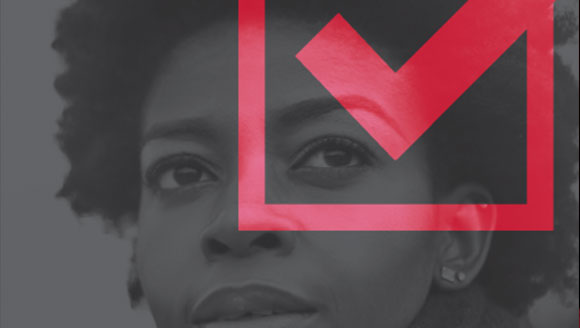Losing the Millennial Vote in Three Inconvenient Truths
Much has been written, postulated, and quite frankly, misunderstood about the generation born between 1980 and 1996—also known as the millennials or Generation Y. This elusive demographic has been described as the logical offspring of the self-indulgence and entitlement of the 1980s and is often portrayed as aimless tech aficionados or hopeless idealists. The truth is, Generation Y is the most financially indebted generation in four generations and a growing majority believe our government should play a bigger role in solving the socio-economic issues currently plaguing our country[1] [2]. Millennials make up nearly a quarter of the total U.S. population and almost two-fifths of the working age population[3]. Tired media depictions aside, millennials are more than students and young adults, with the oldest millennials well into adulthood. They are parents, homeowners, community leaders—and voters. It would be in our nation’s best interest to focus on the electoral potential of this emerging bloc.
According to U.S. Census Bureau population projections, millennials are expected to surpass baby boomers as the largest adult generation by the end of 2019, positioning them as the largest American generation well into the 2060s. However, strength in numbers has not translated into electoral strength.
During the 2016 presidential elections, only 49 percent of eligible millennials voted as compared to 69 percent of eligible baby boomers[4]. Even in the high-interest and highly contested 2018 midterms—the first major election where all millennials were of voting age—these statistics did not improve. Only 22 percent of eligible millennials turned out compared to 66 percent of eligible boomers[5].
Much like the baby boomers, whose wealth and influence have allowed them to dominate the media, government, and financial sectors of the United States for the past five decades, millennials are now poised to be a force to be reckoned with throughout the 21st century. We must do more than acknowledge this generation’s oversized potential in our political discourse; we must face some uncomfortable truths and address why large numbers of millennials don’t vote and how we can change that dynamic. My work with fellow members of this socially conscious, engaged, and talented generation of Americans has lead me to three (inconvenient) truths:
1.Despite their low numbers at the polls, millennials have been successful in shaping major domestic policy.
When the DREAM Act—a bill which would provide a pathway to citizenship to almost one million undocumented minors—failed to pass the Senate in 2010, DREAMers (undocumented immigrants brought to the U.S. as children) did not wait for another member of Congress to champion their cause. They took matters into their own hands. These students and young people coordinated acts of nonviolent civil disobedience and targeted immigration reform advocacy across the country. Their grassroots level organizing resulted in the 2012 implementation of DACA (Deferred Action for Childhood Arrivals), an executive order that provided undocumented persons who met its criteria temporary protection from deportation, work authorization, and the ability to apply for a social security number.
Enraged by the onslaught of fatal police shootings and abuse of young Black Americans by law enforcement, in 2014, millennial activists and allies harnessed the power of social media to organize on-the-ground protests across the country. That momentum transformed into an international movement for Black Lives. Through it came the enactment of several measures, including police body cameras, racial bias training, and the independent investigation of excessive force incidents in more than 24 states[6].
In 1999, 19 years before the horrifying events at Stoneman Douglas High School in Parkland, FL, Columbine High School students held the unfortunate distinction of being involved in the deadliest school shooting in U.S. history. Without the assistance of social media (Facebook was five years away), survivors mobilized parents, gun control activists, and students from across the state of Colorado in a grassroots effort to lobby state and Washington, D.C. lawmakers to end gun violence and promote gun control. Their protests of the National Rifle Association (NRA) convention held in Denver the same year made international news and landed them meetings with President Clinton and Vice President Gore. Their efforts also led to the formation of SAFE, which stands for Sane Alternatives to the Firearm Epidemic, a bipartisan organization that pushed for the successful passage of Amendment 22. The legislation closed the “gun show loophole,” strengthened background checks in the state of Colorado, and provided future generations with a blueprint for effective gun control activism.[7]
Millennials have proven time and again that they are already well-versed in the political process—complete with enviable grassroots organizing and social activism techniques. They will not allow the powers-that-be to remain unaccountable for tone-deaf policies and legislation. Millennials are a generation of disruptors. A vast majority believe that in its current form, voting is neither disruptive nor fast enough to right society’s historical injustices.
-
Many aspects of the voting process are archaic, troublesome, and thankless—at best.
For a generation that has come of age with a silver iPod in their ears and the internet literally at their fingertips, voting has failed to keep pace with current technology and modern-day expectations of convenience and expediency. For millennials, voting in America feels like tasking them to send a fax or use a typewriter and then asking them to wait in line for the privilege to do so. Millennials are often accused of over-exaggeration; but this is far from hyperbole—it’s reality. During the recent 2018 midterm elections, there were reports across the country of too few voting machines to service the number of registered voters; widespread equipment malfunctions, including paper jams and ballot misreads; and insufficient paper ballots when machines failed. Excluding overt voter suppression tactics, the failure to modernize our nation’s polling sites led to tens of thousands of voters waiting in line—sometimes up to five hours—and many abandoning the process altogether[8].
The assumption that millennials don’t vote because they are apathetic is unfair and mostly untrue. One could argue that the current voting system is apathetic to millennial engagement and should adjust to the legitimate needs and concerns of what will be the largest voting bloc for decades to come. In a country where most people can shop from their sofas, parallel park with no hands, and run a business from a cellphone, why are we still shuffling paperwork, hand counting ballots, and standing in lines to vote? If it were easier to vote, and the will of the people were truly carried out in every election, more millennials and more Americans—for that matter—would vote.
-
Millennials overwhelmingly see themselves as diverse, working class, and liberal while most policy makers and political candidates are not.
If we look at the 115th Congress, where millennials accounted for 30 percent of the voting population, only one percent were elected to Congress, compared to 63 percent of baby boomers[9]. The millennial generation is the most diverse adult population in American history with 44 percent minority representation. However, the 116th Congress, the most diverse in U.S. history, still only has 22 percent minority representation[10]. In a 2017 survey of millennials, 32 percent identified as Republican/leaning Republican. During the same time, Republicans made up almost 54 percent of Congress and 66 percent of U.S. governors[11] [12] [13].
The lazy answer to low enthusiasm among millennials would be: “If more millennials voted, they could elect politicians who reflect their demographics and values.” While that is true, given the amount of time, money, and connections needed to run a campaign—resources many millennials don’t have—running for office is out of reach for many. The Center for Responsible Politics determined that the total cost of the 2016 presidential race was well over $2.3 billion, and the total cost for the 2018 Congressional races came in a little under $6 billion. In 2016, the average net worth of the top 20 presidential candidates was upwards of $13 million dollars. Donald Trump was worth an estimated $4.5 billion[14][15].
Meanwhile, a 2013 breakdown of American millionaires by generation showed that 42 percent of boomers are millionaires. This is more than twice the percentage of Generation Xers (18 percent) and millennials (19 percent)[16]. A 2017 report measuring the financial health of Americans revealed that the average millennial earns 20 percent less than baby boomers did at the same age[17]. To add obstruction to disparity, the longer an elected official is in office, the more likely he or she can amass the money and political clout necessary to run subsequent successful campaigns.
Far too often, it is those who can afford to run for office who make it on the ballot. To a growing number of millennials, choosing between the lesser of two—or three—evils no longer passes the smell test. This generation will not hold its noses and pull levers for candidates who are not passionate about their issues.
To rid our politics of this monied dynamic, our nation must engage in a wide-ranging conversation centered on campaign finance reform, the removal of big money from the election process, and strategies to open the doors to younger, diverse, and less affluent candidates. Imposing mandatory term limits would help ensure that politicians are not enriching their political power and effectively blocking new candidates and new ideas out of the political arena.
To tell millennials that things would change if they only voted is dismissive and psychologically painful. This generation faces tough challenges. Will millennials close the generational wealth gap, achieve the American dream of homeownership, curtail the cycle of high debt/low savings brought on by the mounting student loan crisis, and successfully navigate a particularly divisive and uncertain political climate? Generation Y is neither uninformed nor uninterested; it is unheard and largely unsupported.
Our nation must devote more time to understanding and empowering millennials through authentic conversations and engagement on platforms and in ways that resonate. Let’s move beyond rhetoric and start investing resources into modernizing and reforming the broken parts of our shared elections system. Despite—or perhaps because of—the obstacles millennials face, the motivation to create change is as high as optimism for the future[18] and the role millennials will play in it. Given the right tools and opportunity, millennials are more than capable of creating true change both inside and outside the voting booth—and more importantly—forging a more convenient path towards equity and inclusion for the next generation of transformative leaders, activists—and voters.
[1] Houle, Jason N. “A Generation Indebted: Young Adult Debt Across Three Cohorts.” Social Problems Vol. 61, No. 3 (August 2014), Pp. 448-465, vol. 61, no. 3, Aug. 2014, pp. 448–465.
[2] Parker, Kim, et al. “Generation Z Looks a Lot Like Millennials on Key Social and Political Issues.” Pew Research Center's Social & Demographic Trends Project, Pew Research Center's Social & Demographic Trends Project, 18 Jan. 2019, www.pewsocialtrends.org/2019/01/17/generation-z-looks-a-lot-like-millenn....
[3] Frey, William H. “The Millennial Generation: A Demographic Bridge to America's Diverse Future.” Brookings, Brookings, 7 May 2018, www.brookings.edu/research/millennials/.
[4] Lowe, Josh. “Who Voted in 2016? Millennials Will Outnumber Boomers at the Ballot Box.” Newsweek, 1 Aug. 2017, www.newsweek.com/millennials-baby-boomers-voters-who-voted-2016-644746.
[5] Yglesias, Matthew. “The 2018 Electorate Was Older, Whiter, and Better Educated than in 2016.” Vox, 12 Nov. 2018, www.vox.com/policy-and-politics/2018/11/12/18083014/2018-election-result....
[6] Staff. “Black Lives Matter Gets Laws Passed In 24 States.” PopularResistance.Org, PopularResistance.Org, 5 Aug. 2015, popularresistance.org/in-one-year-blacklivesmatter-gets-laws-passed-in-24-states/.
[7] Schulman, Jeremy, et al. “19 Years before Parkland, Columbine Students Tried to Fix America's Gun Problem.” Mother Jones, 24 Mar. 2018, www.motherjones.com/politics/2018/03/19-years-before-parkland-columbine-....
[8] Goggin, Benjamin. “Long Lines, Broken Machines, and Gun Scares - Here Are the Reported Problems Voters Are Experiencing during the Midterms.” Business Insider, Business Insider, 6 Nov. 2018, www.businessinsider.com/voting-problems-by-state-2018-midterm-elections-....
[9] Fox, Justin. “The Long Reign of Baby Boomers Isn't Ending Just Yet.” Bloomberg.com, Bloomberg, 29 Apr. 2018, www.bloomberg.com/opinion/articles/2018-04-29/long-reign-of-the-baby-boo....
[10] Geiger, Abigail, et al. “The Changing Face of Congress in 6 Charts.” Pew Research Center, Pew Research Center, 15 Feb. 2019, www.pewresearch.org/fact-tank/2019/02/15/the-changing-face-of-congress/.
[11] “116th United States Congress.” Wikipedia, Wikimedia Foundation, 31 Mar. 2019, en.wikipedia.org/wiki/116th_United_States_Congress.
[12] “U.S. Governors - Number by Political Party Affiliation 1990-2018 | Statistic.” Statista, www.statista.com/statistics/198486/number-of-governors-in-the-us-by-poli....
[13] “Trends in Party Affiliation among Demographic Groups.” Pew Research Center for the People and the Press, Pew Research Center for the People and the Press, 18 Sept. 2018, www.people-press.org/2018/03/20/1-trends-in-party-affiliation-among-demo....
[14] “Cost of Election.” OpenSecrets.org, 2018, www.opensecrets.org/overview/cost.php.
[15] Fontevecchia, Agustino. “Forbes' 2016 Presidential Candidate Wealth List.” Forbes, Forbes Magazine, 3 Mar. 2016, www.forbes.com/sites/afontevecchia/2015/09/29/forbes-2016-presidential-c....
[16] “Breakdown of U.S. Millionaires by Generation 2013 | Statistic.” Statista, 2014, www.statista.com/statistics/300527/us-millionaires-generation-age/.
[17] “A Financial Scorecard: Millennials vs. Baby Boomers.” A Financial Scorecard: Millennials vs. Baby Boomers | Dowling & Yahnke, 2019, www.dywealth.com/resources/blog/financial-scorecard-millennials-vs-baby-....
[18] Murphy, Meg. “NowUKnow: The Unbridled Optimism of Millennials.” PreparedU View | Bentley University, 13 Feb. 2019, www.bentley.edu/impact/articles/nowuknow-unbridled-optimism-millennials.


 Equality Index
Equality Index  Senate Report
Senate Report  2020 SOBA Essays
2020 SOBA Essays  2019 Report
2019 Report 